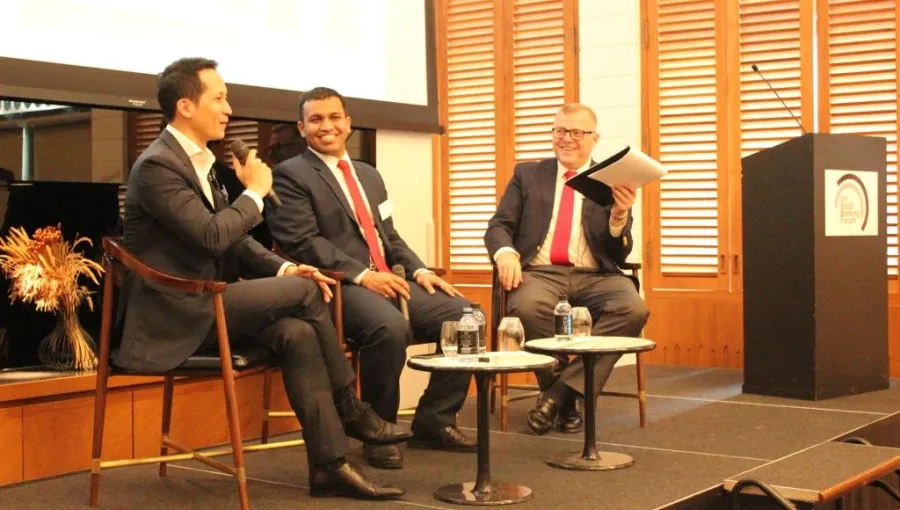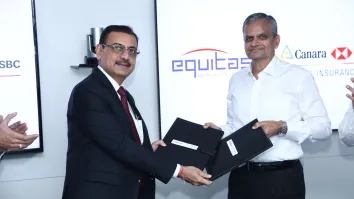
Thai banks urged to implement aggressive yet focussed strategy to keep up with fintechs
Learn what bankers have to say about the challenges of fintechs, digitalisation, and ATM fraud.
Banks are being urged to seriously tackle and embrace emerging industry trends and technological advances, including but not limited to digitalisation and streamlining, in order to remain robust, reliable, and competitive in the years ahead. “Everyone talks about fintech and digital developments in retail banking,” said Varun Mittal, associate director, ASEAN fintech and payment lead at Ernst & Young. Mittal was one of several panelists at the Bangkok leg of the 2017 Asian Banking & Finance Retail Banking Forum held last March 15.
According to Mittal, the traditional portrait of banks — that of being conservative, brick-and-mortar structures with very rigid processes — is slowly becoming a thing of the past, and this is something that banks must be willing to embrace. “Consumer perceptions of traditional banks is waning. They are increasingly open to digital transactions. This generation wants to order everything online — and, somehow, this includes banking,” he added.
Banks, however, find themselves caught off-guard and scrambling to adapt, initial studies indicate. It turns out that banks’ wholesale approach to digitalisation may be hurting the industry more than it is helping. “Most banks are reacting with a ‘kitchen sink’ strategy,” Mittal explained.
“If you look at banks, they all have similar products. All those different kinds of accounts, but [they’re] all the same. So if you make a list of financial services possible, all of the other banks have them. You want to be everything for everyone — and this is a challenge,” said Mittal.
Fintech on the rise
The challenge to go digital presents itself in a very conspicuous time as fintech activities — including all challenges and opportunities — are on the rise and increasingly making headlines. “Digital innovations have the highest transaction within retail payments and investments,” Mittal said, citing other fintech offerings in money transfers and payments, savings, and investments, and even in borrowing and lending. In Thailand, fintechs have been described as “nascent,” and are slowly making their presence felt.
As a concrete example of these vast changes, Mittal quickly polled the forum audience and revealed that nearly all those present had used Line, a popular instant communication app, compared to using the traditional SMS to send messages — revealing that technology had really evolved as far as communications is concerned. “Five years ago, there wouldn’t be any Line users,” Mittal said.
In the meantime, how are banks expected to stay competitive and level up in the age of fintechs?
Bold strategies needed
Mittal advised banks to implement an aggressive yet focussed strategy in order to keep up with fintechs. “Banks need bold strategies to compete in today’s ‘new normal’,” he added. Posing as threats to banks, however, are large organisations that are already well-entrenched in their respective industries but are trying to sell financial services to their existing customers. According to Mittal, these may include, but are not limited to, tech giants both from West and East, telecommunication operators, and on-demand providers.
Mittal cited three specific tech-related trends that will make innovation possible for banks: RPA (robotic process automation) for greater accuracy, risk reduction, productivity, and cost efficiencies; robo-advisory, a game-changer for wealth management; and blockchain.
RPA guarantees a quick return for banks, thus ensuring its effectivity. “In four to six months, you can see all the investments coming back already. Customers also get everything much faster,” he said. Robo-advisory, meanwhile, is capable of achieving scale and the specialisations needed to address various target segments, he added.
The constant challenge of ATM fraud
Risks, however, remain in the area of ATMs, which continue to remain vulnerable in the face of cyber attacks. In Thailand alone, there have been 21 ATMs compromised last year, with approximately US$350,000 in cash being siphoned.
“We would have data leaks here in Thailand, and malware is also quick-preying. Once the system is infected, it is easy for a machine to dispense money illegally. If you look at the principle of control, we both need preventive control and detective control,” said Rin Watakanont, manager for analytics development at Siam Commercial Bank.
Robert Chan, principal consultant at Fiserv, agreed, but is more optimistic when it comes to solutions. “Nowadays, you can use multiple engines that can look into all of a bank’s transactions, including ATM transactions. This can be done using new technology,” he said.
For Watakanont, however, the solution may be more fundamental than novel: “If the banks just keep with the fundamental things when it comes to security and look at the awareness of employees and customers, then they will be able to cope with what will happen in the future,” she said.
Meanwhile, another important consideration banks have to look into is the strength and quality of its human resources, which turns out plays a crucial role in achieving digitalisation.
“Banks are being disrupted from all ends. So banks must build new capabilities to stay relevant digitally,” noted Tana Pothikamjorn, head of digital banking at Siam Commercial Bank. Pothikamjorn cites two basic strategic directions to achieve this: disrupt the market or digitise the bank.
Agility: A team effort
Digitalisation, Pothikamjorn argued, is the way to go but requires several significant changes. A digital-led bank is an end-to-end transformation from front to back. Digitalisation, he added, requires two specific actions: doing things right (“agility”) and doing the right things (“customer centricity”).
“It is imperative to refocus ourselves on creating the core capabilities that will allow the organisation to both be agile and customer-centric,” he said.
According to Pothikamjorn, a bank must be able to adopt some tools that replace traditional documentation, as “document-based development is time-consuming.” This involves harnessing the abilities of a “squad” — or a small startup empowered end-to-end from inception delivery. It would also be helpful to identify a user-story, or functional requirements broken down into simpler stories for more effective use, and a Kanban board, which is a visual-based tool that makes work tracking and planning more effective.
Meanwhile, organisations must also be prepared to adopt the basic, which include “sprint planning” or ensuring a product owner understands a functionality’s every required effort, and keeping everyone on the same page at all times (“stand-up”). Further, as customer needs evolve, constant user testing will allow the team to remain in the loop, while showcasing these tasks will keep everyone updated and interested in the ongoing processes.
Key attributes also of the digitalisation effort, according to Pothikamjorn, involve pairing or “being able to reduce key-man risk and enable cross-team collaboration” and group therapy, or “maintaining trust and comradery”. Teamwork, he said, allows an organisation to directly pursue the answers to the question “Are we an effective team?”.
In achieving the goal of digitalisation, the evolving environment has also challenged the way solutions are realised. According to Pothikamjorn, business paradigms have shifted toward adopting an agile mindset.
Small fish, big fish
“In today’s tech world, the small fish eats the big fish. The theory is pretty straightforward: it’s not a battle or a competition of force anymore in today’s competitive market. It’s kind of a rally now, where you have to change directions all the time,” said Pothikamjorn.
“Who can change directions the best is the one that wins. It’s all about trying out different ways of working,” he added, citing Siam Commercial Bank’s experience in digitalisation.
“The biggest resistance was actually not from the senior management, but from the people, as we were changing the way they are used to working. We needed to educate them along the way,” he shared.
Thinking long-term is also key, Mittal added. “A Scotch tape solution will not solve challenges. How do we generate the talent and prepare the teams inside the bank? It has to be at least a one or three-year-horizon business case. And then you can make it,” he said.
In photo (from left to right): Tana Pothikamjorn, Varun Mittal, and Tim Charlton during the panel discussion


















 Advertise
Advertise










